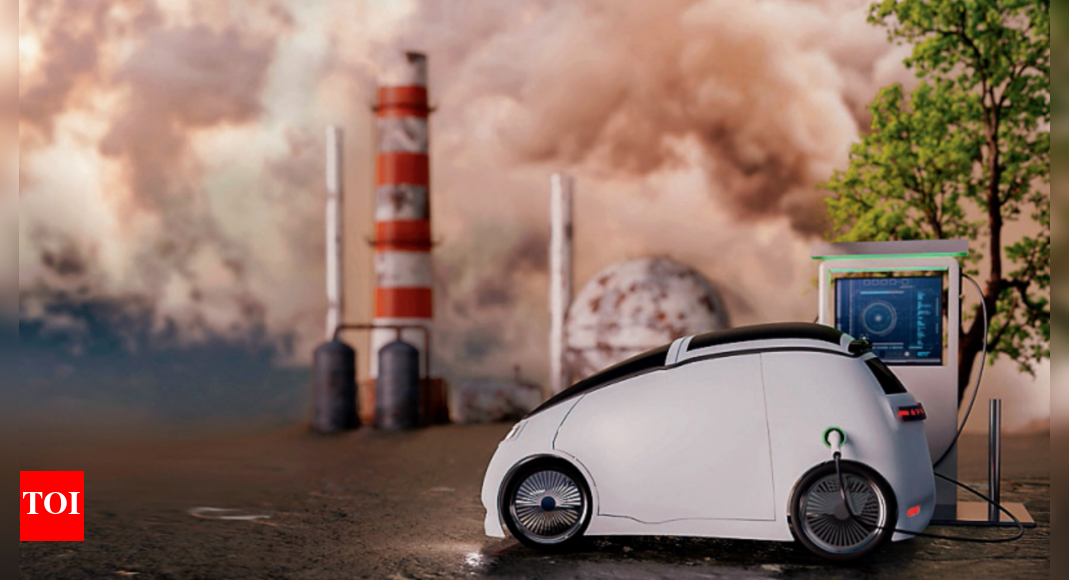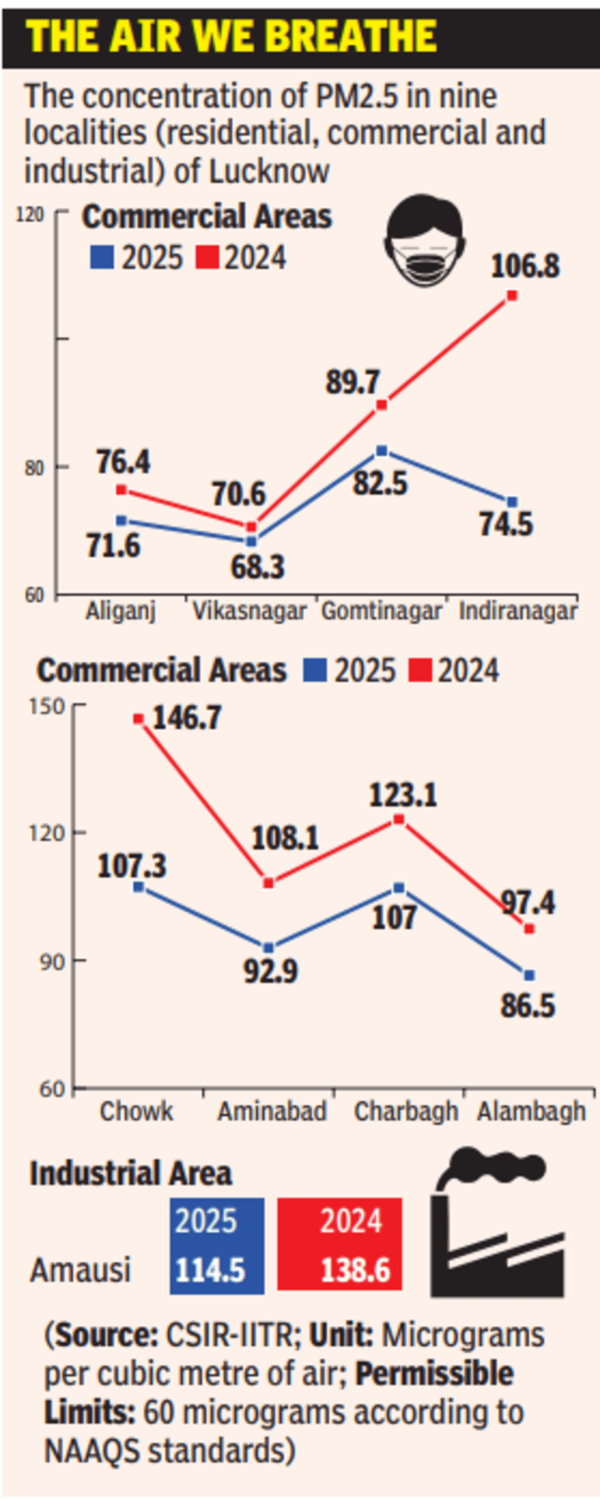Now Reading: EVs & cleanliness campaigns taking Lucknow closer to green goals
-
01
EVs & cleanliness campaigns taking Lucknow closer to green goals
EVs & cleanliness campaigns taking Lucknow closer to green goals


G Gradual increase in the number of electric vehicles (EV cars and two-wheelers) on Lucknow roads in the last one year and other air pollution abatement measures have brought positive changes in the city’s air quality.As compared to pre-monsoon period in 2024, the corresponding duration is less polluted this year, according to the ‘Assessment of Ambient Air Quality of Lucknow City’, a pre-monsoon 2025 report released by CSIRIndian Institute of Toxicology Research (CSIR-IITR) on the eve of World Environment Day on Wednesday.

According to the report, nine localities of the state capital, comprising four commercial and residential each, and one industrial, were monitored in April-May (pre-monsoon period).
Poll
Do you think the recent decline in pollution levels in Lucknow is sustainable?
The report highlighted that though there is a declining trend in pollution levels as compared to the corresponding period last year.According to NAAQS, the PM 10 concentration should not be more than 100 and PM 2.5 concentration should not be more than 60 micrograms per cubic metre of air.In all the nine localities, the air pollution levels were above the safe limits with Gomtinagar, Charbagh and Chowk being the most polluted localities.
Highest average PM2.5 concentration was recorded in Gomtinagar (82.5 micrograms per cubic metre), followed by Indiranagar (74.5), Aliganj (71.6), and Vikasnagar (68.3). In commercial areas, Chowk’s air was the most polluted with PM 2.5 concentration recorded 107.3 micrograms per cubic metre followed by Chargbagh (107), Aminabad (92.9) and Alambagh (86.5). This year, the PM 2.5 concentration range was 68.3-114.5 micrograms while last year this range was 70.6-138.6 micrograms.Meanwhile, the highest average PM 10 concentration in residential areas was recorded in Gomtinagar (131.3 micrograms), followed by Aliganj (126.8), Indiranagar 119.8, and Vikasnagar 117.2. In commercial areas, highest PM 10 concentration was recorded in Charbagh (187.6 micrograms) followed by Chowk (174.5), Aminabad (162.6) and Alambagh (151.7), respectively.“April and May are typically dry summer months in Lucknow city.
Hence, there is a rise in surface temperature. Air turbulence results in loose soil and road dust resuspension into the atmosphere. Also, the ongoing road widening, pavements, flyover, and building construction activities in the city also contributed the entrainment of dust into the ambient air environment,” the IITR report said. The report highlighted that the number of registered vehicles in the city has also gone up, contributing to more jams, increased fuel consumption and relative traffic pollution along the city roads. Despite these factors, the particulate levels showed a declining trend from the previous year’s pre-monsoon surveys.“The gradual increase in personal EV cars and two-wheelers has also been observed on city roads during the last one year indicating a shift to cleaner fuel vehicle use in the city,” the report said.





















